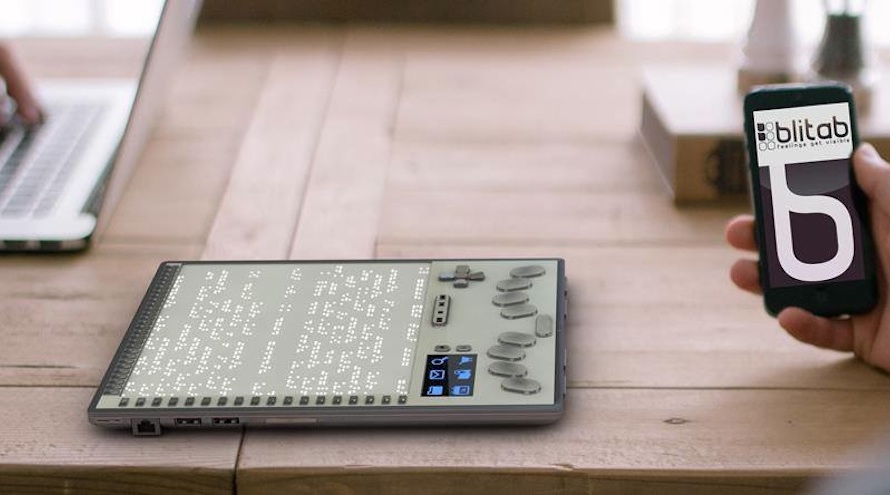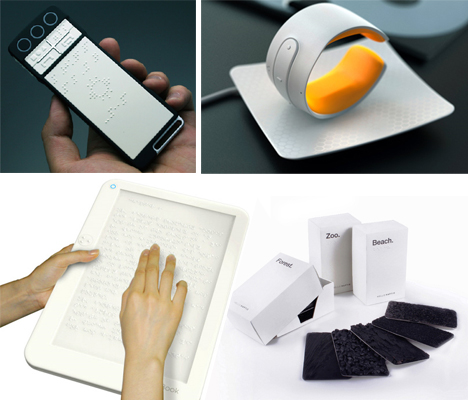Speech-to-Text Devices for Low Vision: Narrowing the Communication Gap
Speech-to-Text Devices for Low Vision: Narrowing the Communication Gap
Blog Article
Discover Ingenious Devices Developed for the Visually Damaged
The advancement of ingenious devices for the visually impaired stands for a considerable advancement in ease of access and freedom. Technologies such as wise glasses with AI capacities and mobile applications designed to offer auditory summaries are improving everyday experiences for customers.
Smart Glasses for Navigation

Smart glasses created for navigating are changing the means visually damaged people engage with their setting. These sophisticated devices use a mix of camera technology, artificial knowledge, and auditory responses to provide real-time details regarding environments. By utilizing obstacle discovery systems, clever glasses can notify users to potential hazards, making it possible for more secure flexibility in both unknown and familiar setups.
The integration of GPS innovation further boosts navigation abilities, permitting individuals to get auditory instructions as they relocate. This hands-free technique not just cultivates self-reliance yet likewise empowers visually impaired people to navigate city landscapes with raised confidence. In addition, numerous wise glasses are equipped with features that recognize landmarks and road indicators, offering contextual info that enhances the individual experience.
In addition, the development of these gadgets is constantly advancing, with firms functioning to enhance the precision of things recognition and expand the variety of navigational functions. As clever glasses come to be more inexpensive and easily accessible, they hold the possible to substantially change every day life for visually damaged individuals. Inevitably, these innovative devices stand for a critical step toward inclusivity, offering boosted flexibility and a higher feeling of autonomy for people navigating the globe around them.

Mobile Application for Daily Living
Exactly how can mobile applications improve the every day lives of aesthetically damaged individuals? Mobile applications are changing the means aesthetically impaired individuals browse their settings, take care of everyday jobs, and gain access to information. These applications give essential assistance with various functionalities, fostering independence and boosting quality of life.
Several ingenious mobile apps are created particularly for day-to-day living. As an example, apps like Be My Eyes attach visually impaired customers with sighted volunteers via video clip telephone calls, permitting them to obtain real-time assistance with jobs such as checking out tags or navigating unfamiliar areas. In A Similar Way, Seeing AI, developed by Microsoft, makes use of expert system to define surroundings, checked out text, and determine things, effectively transforming a smartphone into an effective tool for everyday help.
Additionally, navigating applications tailored for the visually impaired, such as Aira and BlindSquare, provide audio-based instructions and ecological details, allowing customers to traverse their environments securely and confidently. Past navigating and instant aid, mobile applications likewise support company and task monitoring, with functions that assist customers set suggestions, produce to-do checklists, and track visits. In summary, mobile applications function as crucial resources, encouraging aesthetically damaged individuals to lead even more independent and satisfying lives.
Wearable Technologies for Support
Empowerment via innovation is increasingly noticeable in the world of wearable devices developed to help aesthetically damaged individuals. These cutting-edge tools incorporate effortlessly right into everyday life, boosting navigating and supplying necessary comments to customers. As an example, wise glasses equipped with cams can check out and acknowledge faces text out loud, allowing individuals to communicate more with confidence in social and expert settings.
An additional remarkable advancement is the use of haptic comments systems in wearable tools. These systems make use of vibrations or other tactile signals to share information about the user's atmosphere, such as challenges or adjustments in terrain, boosting mobility and security. Wearable technologies also consist of wristbands that connect to smartphones, signaling customers to notifications with subtle vibrations, hence enhancing connection without reliance on visual hints.
As these technologies remain to advance, they are not only boosting self-reliance for visually impaired individuals however likewise promoting a greater sense of inclusion in society. By linking the gap check it out in between challenges dealt with in everyday living and the possibility for freedom, wearable technologies work as pivotal devices in the pursuit for equal rights and empowerment for those with aesthetic disabilities.
Sound Summary Tools
Audio description tools play a crucial duty in improving access for aesthetically damaged people, offering them with the ability to involve with aesthetic media. Voice-activated assistive devices. These tools provide narrated summaries of essential visual components in films, click this link tv programs, and live efficiencies, making sure that users can completely comprehend the context and feelings communicated via visuals
Sound description can be incorporated into different platforms, consisting of streaming solutions, movie theater screenings, and live movie theater. Numerous popular streaming services now consist of audio description as an access attribute, enabling viewers to pick it conveniently. Along with traditional media, specialized apps additionally exist, providing audio descriptions for art exhibits, museums, and various other cultural occasions.
The effectiveness of audio summary depends upon the ability of the narrators, that must convey visual information succinctly without interfering with the initial sound. Developments in this area are additionally leading the means for more tailored experiences, where individuals can readjust the degree of detail and pacing according to their preferences.
Braille Innovations and Instruments
Braille gadgets and advancements have actually significantly changed the method aesthetically impaired people connect with text and information. Modern advancements have actually led to the development of versatile devices that boost literacy and self-reliance among individuals.
Moreover, portable Braille notetakers incorporate traditional Braille input with modern functionalities, assisting in note-taking, organizing, and record modifying on the move. Voice-activated assistive devices. These portable gadgets often include text-to-speech capabilities, connecting the gap in between Braille and acoustic information
Furthermore, innovative Braille printers have arised, enabling individuals to compact reading glasses produce Braille tags, documents, and academic materials effectively. This availability cultivates better involvement in educational and professional environments, eventually promoting inclusivity.
Furthermore, research into wise Braille innovations continues to expand. Gadgets that incorporate artificial knowledge are being explored to supply real-time navigating help and contextual details, improving the user experience in varied settings. Generally, these innovations mirror a commitment to encouraging aesthetically impaired people through innovation, guaranteeing they can quickly accessibility and engage with the globe around them.

Conclusion
The innovation of cutting-edge tools for the visually impaired significantly enhances independence and top quality of life. These modern technologies not just foster higher inclusion however also promote autonomy in daily tasks, inevitably adding to a more obtainable and equitable culture for visually damaged individuals.
As smart glasses end up being more easily accessible and inexpensive, they hold the possible to substantially transform day-to-day life for aesthetically impaired customers. Mobile apps are reinventing the means visually impaired customers browse their environments, handle everyday jobs, and access info. Applications like Be My Eyes attach visually impaired individuals with sighted volunteers via video clip telephone calls, allowing them to obtain real-time aid with tasks such as reviewing tags or navigating unknown spaces.Additionally, navigation applications tailored for the visually damaged, such as Aira and BlindSquare, offer audio-based directions and ecological info, enabling users to traverse their surroundings securely and confidently.The development of ingenious tools for the aesthetically damaged considerably improves independence and top quality of life.
Report this page